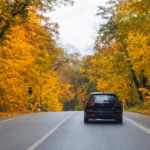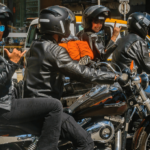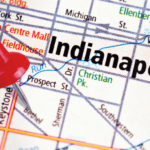
You’ve probably heard of Sturgis or Daytona Bike Week, but do you know how these massive gatherings actually started? Most began as small weekend rides or impromptu beach races where a few dozen riders showed up. Fast forward to today, and you’re looking at events that pull in hundreds of thousands of people and pump millions into local economies.
- Laconia started in 1916 with a simple Gypsy Tour and became America’s oldest motorcycle rally, now drawing 225,000 to 300,000 riders each June to New Hampshire’s Lakes Region.
- Sturgis began in 1938 when nine riders showed up for races and stunts organized by the Jackpine Gypsies, and it’s grown into a 10-day August event that regularly sees 500,000 people transform a town of 7,000.
- The 1947 Hollister incident created the modern outlaw biker image through sensationalized newspaper coverage and a staged photograph that appeared in Life magazine, sparking decades of cultural perception about motorcycle clubs.
The Beach Race That Started It All
Daytona’s story begins with sand and speed. On January 24, 1937, Ed Kretz fired up his Indian motorcycle and won the first Daytona 200 on a 3.2-mile course that mixed hard-packed beach with paved road. He averaged 73 miles per hour, which doesn’t sound wild until you remember this was 1937 and half the course was literally sand. The event took a break during World War II, but Bill France (yes, the NASCAR guy) brought it back in 1947 and turned it into what we now call Daytona Bike Week. Today it runs 10 days every March and brings in around 500,000 people who want sun, racing, and good times.
When Nine Guys Created Something Huge
J.C. “Pappy” Hoel bought an Indian motorcycle franchise in Sturgis, South Dakota, then formed a club called the Jackpine Gypsies in 1938. On August 14 that year, nine riders raced while maybe 175 people watched. Pappy himself crashed through burning pine boards as a stunt. The crowd loved it enough that he kept going. Fast forward to 2015, and Sturgis hit 739,000 people during its 75th anniversary. Recent years sit around 400,000 to 500,000, which is still nuts when you remember the town itself has 7,000 residents. Traffic counts measure bikes crossing into the area for 10 days, so one person riding in and out daily gets counted multiple times. Still, the real number of unique visitors is massive.
The Weekend That Wrote the Rules
Hollister, California, hosted Gypsy Tours since the 1930s without drama. Then July 4th weekend, 1947, rolled around. The town expected maybe 1,000 riders. Around 4,000 showed up. The seven-person police force couldn’t handle it. Drunk bikers raced through the streets, broke some bottles, and got rowdy at bars. By today’s standards, pretty tame. But a San Francisco Chronicle photographer named Barney Peterson saw an opportunity. He found a drunk guy, sat him on a motorcycle, scraped beer bottles around the tires, and snapped the photo. Life magazine ran it with the headline “Cyclist’s Holiday: He and friends terrorize a town.” The American Motorcyclist Association supposedly said 99 percent of riders were fine, implying one percent were outlaws. Clubs grabbed that “one percenter” label and wore it proudly. Whether the AMA actually said that is disputed, but the damage was done. Hollywood made “The Wild One” with Marlon Brando in 1953, and the outlaw biker became American mythology.
The Oldest One Still Running
Laconia Motorcycle Week traces back to 1916, when riders showed up at Weirs Beach for what they called a Gypsy Tour. Racing started officially in 1934 with the Loudon Classic. The event grew until 1965, when gang violence brought negative attention and city officials nearly killed it. By the 1990s, local businesses fought to bring it back as a full week. Now it runs nine days every June, usually including Father’s Day. Recent attendance sits between 225,000 and 300,000. Basecamping in Belmont, NH puts you close enough to hit Weirs Beach before the crowds but far enough to breathe when you want a quiet refuel. The event brings over $100 million into New Hampshire’s economy during those nine days.
The Touring Crowd Gets Their Own Thing
Americade started in 1983 when Bill Dutcher organized “Aspencade East” at Lake George, New York. About 2,000 people showed up. Three years later, they renamed it Americade because it had grown beyond its regional roots. The focus here is touring bikes, demo rides, and organized group trips through the Adirondacks. No rowdiness, no outlaw posturing. Just 50,000 to 60,000 riders who want to test new bikes and take scenic routes through the mountains. Manufacturers bring huge demo fleets. You can ride a new Harley, BMW, or Honda before you buy. The event happens the first week of June, and the family-friendly vibe makes it different from the bigger, louder rallies.
First-Timer Survival Guide
Book your room or campsite at least six months ahead for Sturgis or Laconia. Daytona’s a bit easier because Florida has more lodging, but don’t sleep on it. Check local helmet laws before you go. South Dakota doesn’t require them to be over 18. New Hampshire is the same. Florida and California have different rules. Expect traffic jams during peak hours at any rally. Plan your rides for early morning or late afternoon. Don’t assume every vendor takes cards. Bring cash. And if someone offers to sell you event patches or shirts that look official, make sure you’re not buying knockoffs. The real rally organizations license their vendors.
What the Numbers Actually Mean
When Sturgis says 500,000 attendance, that’s vehicle crossings over 10 days. One bike coming and going counts twice. Same rider multiple days? More counts. Traffic data, trash collection, and vendor licenses give better pictures than headlines. Laconia uses similar math. Daytona’s 500,000 includes people who ride through for one day and people who stay the full week. The point is, these numbers show scale but not exact headcounts. Still, when a town of 7,000 handles half a million bikers, the logistics alone are wild.
Why People Keep Coming Back
These rallies aren’t just about bikes. They’re about parking your regular life for a week and being around people who get it. You can talk carburetors with strangers at a gas station. You can watch someone’s custom build and not feel weird asking about their paint job. First-timers show up nervous and leave planning next year’s trip. The history matters, but the experience is what keeps it alive.
This post may contain affiliate links, meaning we may earn a commission if you make a purchase. There is no extra cost to you. We only promote products we believe in.








